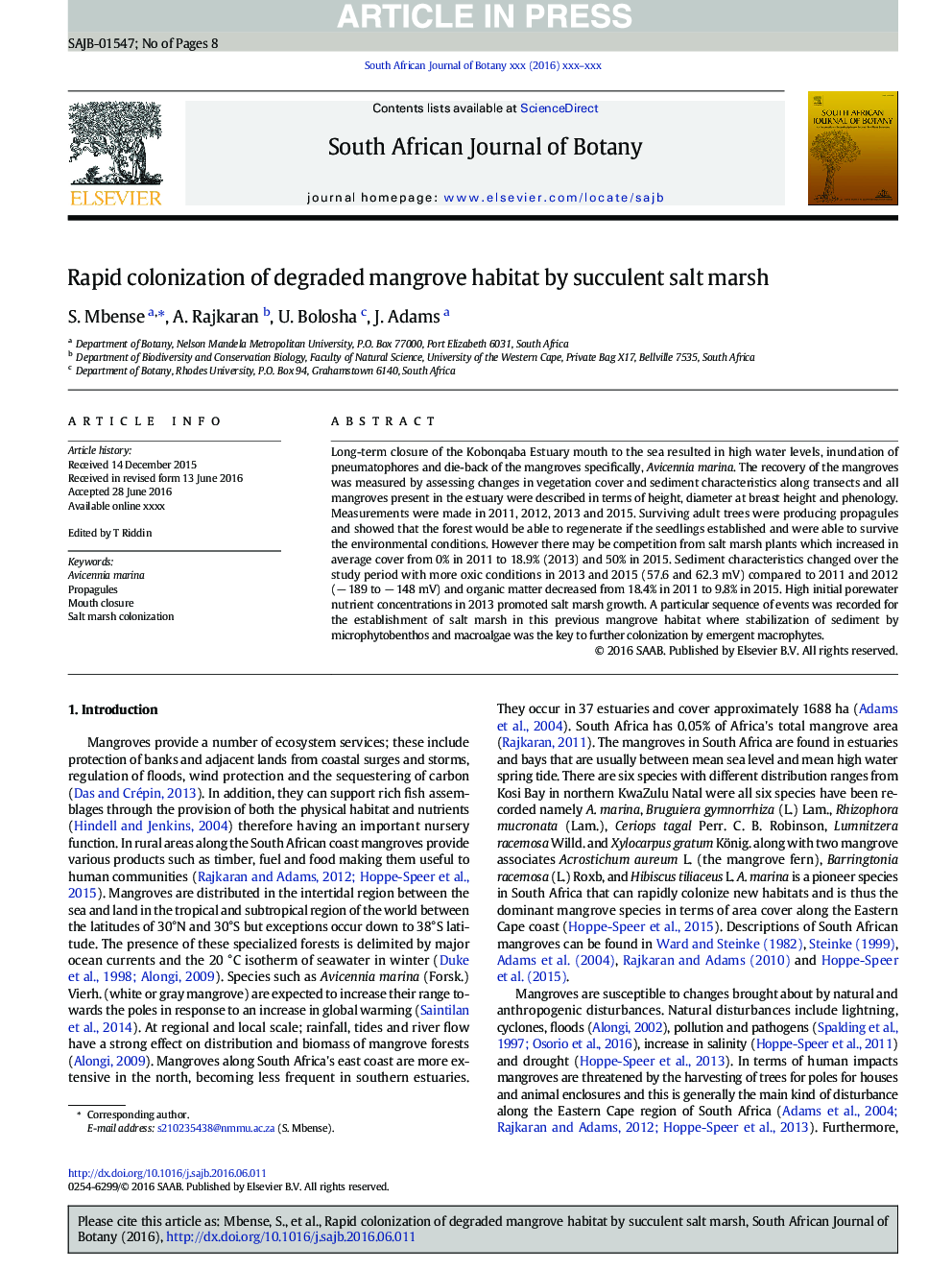| Article ID | Journal | Published Year | Pages | File Type |
|---|---|---|---|---|
| 5763143 | South African Journal of Botany | 2016 | 8 Pages |
Abstract
Long-term closure of the Kobonqaba Estuary mouth to the sea resulted in high water levels, inundation of pneumatophores and die-back of the mangroves specifically, Avicennia marina. The recovery of the mangroves was measured by assessing changes in vegetation cover and sediment characteristics along transects and all mangroves present in the estuary were described in terms of height, diameter at breast height and phenology. Measurements were made in 2011, 2012, 2013 and 2015. Surviving adult trees were producing propagules and showed that the forest would be able to regenerate if the seedlings established and were able to survive the environmental conditions. However there may be competition from salt marsh plants which increased in average cover from 0% in 2011 to 18.9% (2013) and 50% in 2015. Sediment characteristics changed over the study period with more oxic conditions in 2013 and 2015 (57.6 and 62.3 mV) compared to 2011 and 2012 (â 189 to â 148 mV) and organic matter decreased from 18.4% in 2011 to 9.8% in 2015. High initial porewater nutrient concentrations in 2013 promoted salt marsh growth. A particular sequence of events was recorded for the establishment of salt marsh in this previous mangrove habitat where stabilization of sediment by microphytobenthos and macroalgae was the key to further colonization by emergent macrophytes.
Keywords
Related Topics
Life Sciences
Agricultural and Biological Sciences
Agronomy and Crop Science
Authors
S. Mbense, A. Rajkaran, U. Bolosha, J. Adams,
